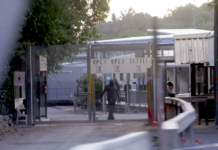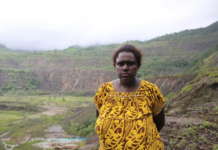Tukuraki after the landslide … video by Julie Cleaver.
In January 2012, a small Fijian village on Viti Levu was almost wiped off the map by a deadly landslide. In the same year, the barely recovered village of Tukuraki was hit by Cyclone Evan. Four years later, Tukuraki was devastated once again by the wrath of Tropical Cyclone Winston, scattering the community far and wide across the northwest of the island. The inland village near Ba is now in the process of relocating to a new site. The Pacific Media Centre’s Kendall Hutt and Julie Cleaver travelled to the remote village to find out how the people are adapting.
By Kendall Hutt and Julie Cleaver
Vilimaina Botitu was fast asleep when the earth from a nearby hill tumbled down, burying her uncle’s house in mud, trees, and rock.
 Her small Fijian village of just 10 houses, located in the mountainous highlands of Ba, Viti Levu, had been pummelled by rain for a week prior to the landslide in January 2012.
Her small Fijian village of just 10 houses, located in the mountainous highlands of Ba, Viti Levu, had been pummelled by rain for a week prior to the landslide in January 2012.
The people of Tukuraki are no strangers to heavy downpours — even as we sit cross-legged on a flax-weaved mat in Botitu’s new temporary home, located just 10km away from the old village, the rain moves in quickly and heavily, seemingly out of nowhere.
But on the day of the landslide, Botitu knew something was wrong.
“I begged Uncle Anare to bring his family to stay with me, because where I live it is safe,” she tells us through tears. “But he didn’t listen. He just said, ‘If God thinks it is my time to go, then I am okay with that.’”
Botitu tells us the ridge behind her uncle’s house was unstable, as it had unknowingly been destabilised by the removal of pine trees from a nearby timber farm above. She says the hill near her place was made of rock and therefore less likely to slip.

Despite this, Uncle Anare was reluctant to move his family to sleep at her house, and that night he, his wife, and two daughters, aged just only six months old and a year-and-a-half, were buried alive in their sleep.
Access to the village via the road was wiped out in the fatal landslide, as was the community’s path to fresh water. The villagers of Tukuraki were subsequently cut-off from the outside world for three days and left to recover the bodies of Anare Taligo and his family themselves.

“It was very hard because there was no machine to help us … so they were struggling to take out the bodies.”
Botitu was in shock. It was hard to imagine that just a few hours ago, she was drinking grog with her uncle, having a good time.
“You know, it was family time, teasing each other, laughing at each other, having fun.”
Now, she was staring at the Taligo’s home, completely covered by mud and rock.
“I didn’t know what to do,” she tells us through tears.
Girls walked to safety
In a grief-filled daze and to keep her two daughters safe, Botitu walked her girls to a nearby cave to take shelter, half-an-hour away from the village. She then rushed back to the village to help the elders who were left behind. Once the bodies of the Taligo family had been recovered, it was Botitu who volunteered to wash them and prepare them for burial.
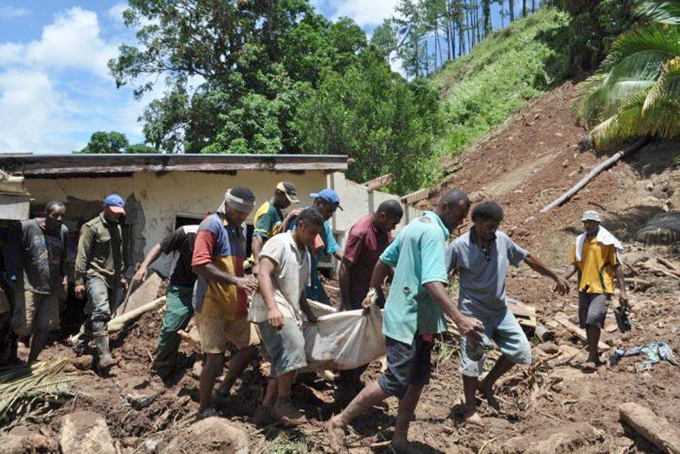
“The first body out of the mud was their mother. I washed the mother, but we couldn’t see her face. It was black and the tongue was popping out. The two daughters – the eldest one, she was smashed on the head, and the small one, it’s just like she’s sleeping.
“Then at 1.30pm, they took out the father’s body. The father — there were not even any clothes on the body. His hands were covering his ears, I thought maybe for the thunder storm, but his body was good. So I washed them properly, then lay them down in the hall.”
The landslide not only destroyed 50 percent of the village, but also left the community traumatised. Botitu tells us, as we struggle to hold in our own tears, that after the burial ceremony the small village of 10 houses was in shock. It was a sleepless and fearful night for the people of Tukuraki.
“It took me three months for the smell of their bodies to go away, because during the time I bathed them, I didn’t have any gloves. I didn’t use any protection.”
Today, the pain of losing her Uncle, Aunty-in-law and nieces is still fresh.
“When I go to Tukuraki [the old village] I can’t stay there for very long. Every time I go there, as soon as I reach the village, it’s too hard. It brings back too many memories.”
Relocation decision
Due to such damage and loss, the Fijian government made the decision to relocate the Tukuraki community soon after the landslide. This was a unique move, as the past three relocations to take place in Fiji — Vunidogoloa village in the province of Cakaudrove, Yadua in Bua province, and the partial relocation of Vunisavisavi village, also in Cakaudrove — have all taken place due to rising sea levels caused by climate change.
Tukuraki is therefore the first relocation to take place inland.
In early 2014, the site for the new Tukuraki village was gifted to the community by a neighbouring clan. But for the villagers, who were living in makeshift shelters made out of what the landslide left behind, tragedy would strike again only 11 months later, when Cyclone Evan, a category four tropical cyclone, struck them.

Cyclone Evan wiped out what homes and belongings had been salvaged from the landslide at their temporary site, a few kilometres down the road, and also destroyed more of Tukuraki’s livelihood — its crops.
“This place, there’s no working, we just do the farming and sell in the market,” Botitu says.
But despite being in the midst of relocating to a new site, climate change was not quite done with Tukuraki just yet. In 2016 severe Tropical Cyclone Winston destroyed what remained of the small mountainous village. The caves, which had kept Botitu’s daughters safe following the landslide, were the residents of Tukuraki’s only shelter from the wrath of Winston.
“We had a very hard time after the cyclone because everything we owned was lost,” Botitu explains.
Salvaged belongings
What belongings she managed to salvage now sit in boxes in her temporary home. The villagers crops, consisting of vegetables and fruit trees, were once again ruined.
“We used to sit under the mango trees and drink grog,” Botitu reflects, “we led a simple life, but we were rich.”

Six years on from the fatal landslide, the forest and a broken church are all that remain of Tukuraki. But as the buildings of the relocated village near completion, there is hope: the displaced community will have the chance to come together again, something Botitu is looking forward to.

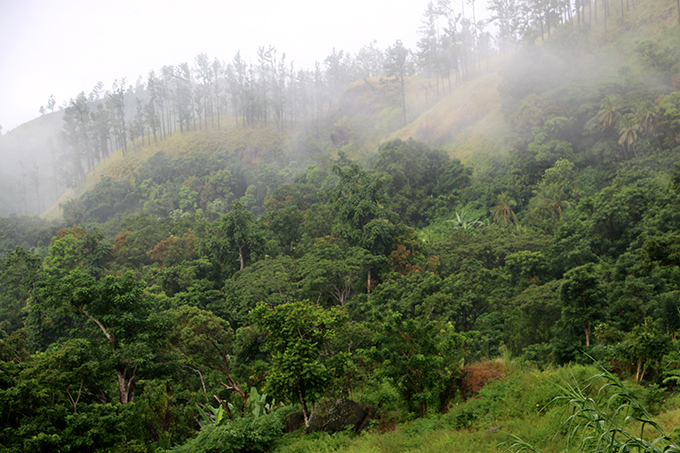
“It gets very lonely up here, with just your family and construction workers around.”
For George Dregaso, project manager of the relocation, seeing the villagers return to a normal way of life is what motivates him.
“I just want to see them become a community again. That’s what really drives me.”
However, the relocation and adapting to climate change has not been an easy journey. Although the people of Tukuraki are grateful for the relocation, the process has been long and gruelling.
“It happened in 2012 and now it’s 2017. For that long period of time we have had to struggle.
“It’s been very challenging for us. It’s taken a very long time.”
Significant setbacks
The relocation project was meant to be completed in November 2016, but has faced significant setbacks due to a shortage of building supplies following Cyclone Winston. Dregaso says the lack of materials is not unique to the project, but “endemic to Fiji as a whole”.
“But we’ve researched and found more building materials.”
The project is now due to be completed in July this year, ending six years of limbo for the Tukuraki community. Sadly, the new village is not without its drawbacks. The relocated village site is mostly bare and Botitu says this is the hardest part about leaving Tukuraki behind.
“The old Tukuraki, it was a nice village. The relocated site just gives us a place to sleep. There is no place to do the farming.”
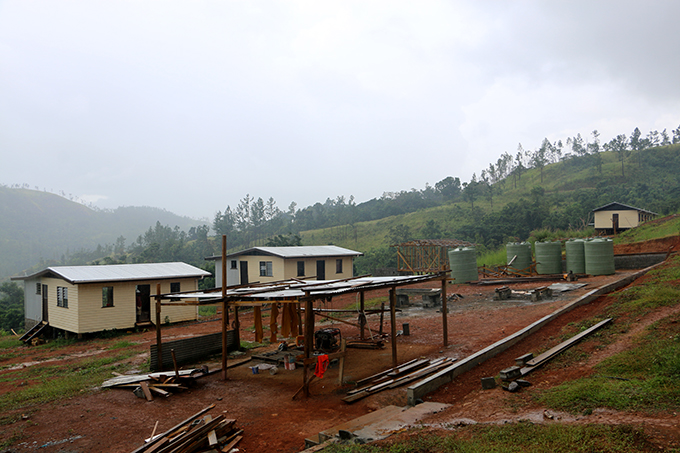
This means the villagers have to walk approximately 10km across hilly ground to get to their old crops. As we stand on a hill overlooking the site with Dregaso, it is easy to understand Botitu’s disappointment. All of the houses bar one have been completed and the Methodist church is yet to be built, and there are no trees in sight.
Strands of grass are barely visible against the red-brown clay, and the only way to traverse the village easily is in gumboots, which were kindly donated to us by a couple of the contractors.
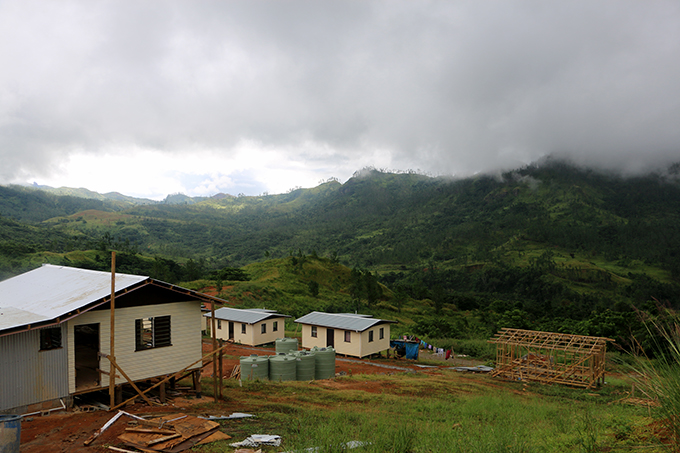
The only consolation seems to be that the villagers now have access to clean, running water, flushable toilets, showers, and shelter from future storms. The community hall, which doubles as an evacuation centre, can withstand a category five cyclone, meaning the villagers will no longer be forced to take shelter in the caves.
If the reinforcement of the evacuation centre is anything to go by, it is certain the people of Tukuraki, and indeed people across the Pacific, will continue to face head-on the effects of a warming planet.
800 communities hit by climate change
Fiji’s Ministry of Foreign Affairs states that approximately 800 communities within the country have been affected by climate change. In the Pacific alone, the London School of Economics estimates 1.7 million people could be displaced by 2050.
For Fiji’s main island, Viti Levu, home to the village of Tukuraki, the impacts of climate change are expected to cause economic damages of up to F$52 million (NZ$35.7 million) a year. That is four percent of the country’s total gross domestic product.
For Tukuraki, the everyday, ongoing effects of climate change are visible. “It shouldn’t be raining now,” Botitu comments.
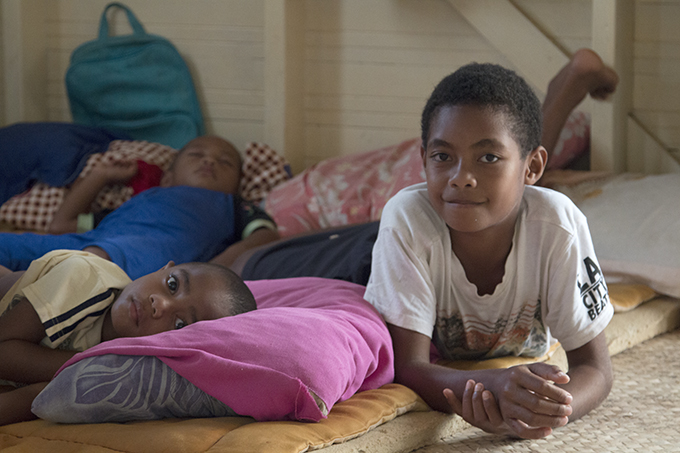
She highlights that evenings are hotter than they used to be, meaning her family eats and sleeps later: their lifestyle is changing. Also, every time it rains, the roads are washed out and unusable: if the villagers are not busy in the fields, they are working on the road. As we drove in we passed Botitu’s husband and several other men busy at work on the road, and as the truck’s tires continued to spin uselessly in the loose gravel, it is easy to see why.
Even at lunch, as we sit eating soup filled with noodles, pumpkin, potato, bacon and spinach, surrounded by the contractors, we were warned by Dregaso: “If we don’t leave now, we’ll have to stay the night, maybe for a couple of nights, would you girls be happy with that?”
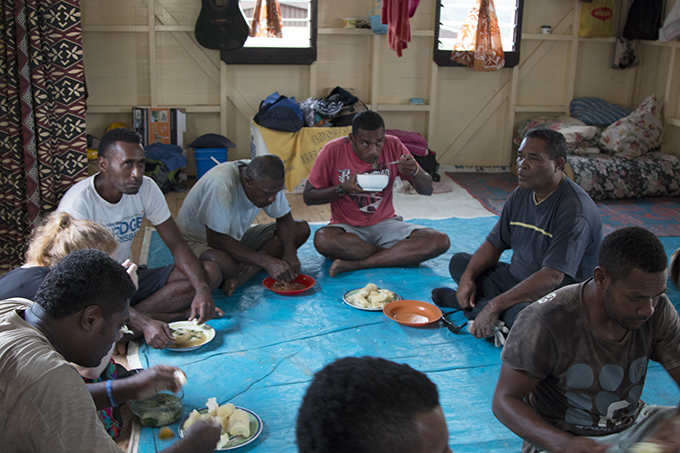
We left promptly after that and were confronted by a grader and steam roller on the way out. For two city girls from New Zealand, this was a shock, but for the people of Tukuraki, it’s a normal, daily occurrence. It makes the difficulty of accessing the village all the more challenging.
Dregaso tells us that only a month ago Tukuraki was inaccessible for almost three weeks.

Because of this all, the contractors are forced to live on-site, and if it was not for Dregaso bringing up much-needed supplies, such as bags brimming with food and large fuel cans, both the villagers and contractors would be forced to live off what little crops remain.

For Fiji, a giant question mark looms over the future of climate change relocations. Potentially 45 villages have been earmarked for relocation, although Fiji’s Climate Change Unit says this number is not final. These relocations are also not expected to occur within the next five to 10 years.
A source from the Ministry of Economy’s Climate Change Unit says: “I doubt it. Relocation is a long process and quite expensive.”
The source says the Fijian government therefore cannot realistically afford to complete all of these relocations. “It can only be possible with the help of donor funds, financial institutions, and co-finance with the community itself.”
In Fiji, climate change is not coming, it is already there. For Vilimaina Botitu and the community of Tukuraki, global warming is not an idea: it is a lived and daily experience. When asked if she was mad at industrialised countries for changing her way of life, Botitu had no anger, only sadness: “I pray to God that climate change will stop.”
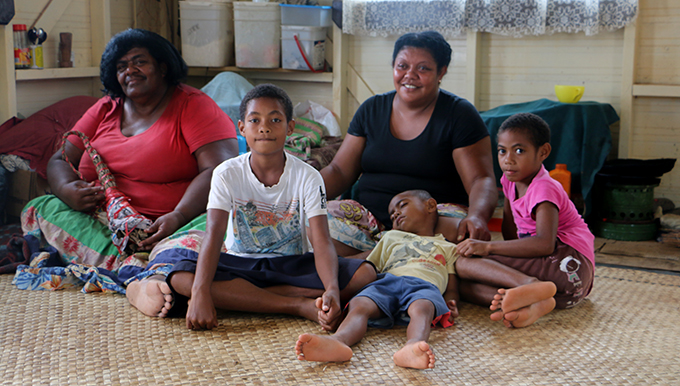
Julie Cleaver and Kendall Hutt are in Fiji for the Bearing Witness project. A collaborative venture between the University of the South Pacific’s journalism programme, the Pacific Centre for the Environment and Sustainable Development (PaCE-SD), the Auckland University of Technology’s Pacific Media Centre and documentary collective Te Ara Motuhenga, Bearing Witness seeks to provide an alternative framing of climate change, focusing on resilience and human rights.


